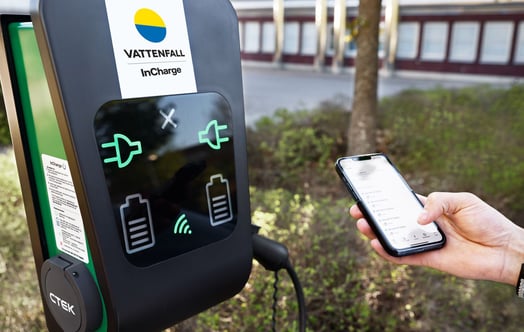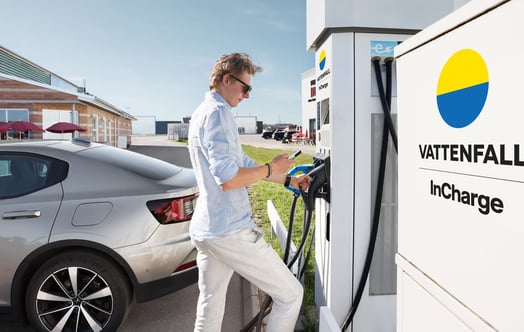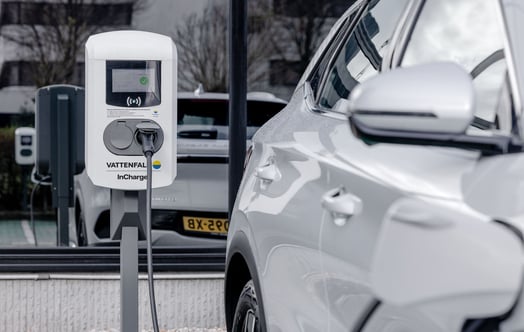Vattenfall in pilot project with 200 electrical Volkswagen cars
Electricity usage in Sweden is expected to increase over the next 20 years, while the share of weather-dependent electricity also rises. Bidirectional charging, storage, and fossil free electricity are parts of a pilot project aimed at using electricity more efficiently. For example, using the electrical vehicle’s battery for more than just driving.
To meet the need for more electricity in combination with rapid changes in production and demand, ancillary services and smart control services are increasingly being used. Vattenfall, Energy Bank, and Scania Volkswagen Dealers are now launching a pilot project on bidirectional charging, a technology also known as V2H (Vehicle to Home) and V2G (Vehicle to Grid). This technology means that electric car chargers can both charge the car's battery and deliver electricity to the household or back to the grid.
When electricity prices are low, the car's battery is charged, and stored electricity can be used for both household needs when electricity prices are higher and to balance the grid.
"We are committed to building a future where everyone can choose fossil free ways to move, make and live. Electric cars can play an important role in fulfilling this goal. To utilize the electric car to store fossil free electricity for the household to use and sell the surplus to the grid when it is most profitable, is a smart way of energy efficiency," says Magnus Berg, Manager Customer Products & Solutions at Vattenfall.
The pilot project involves 200 bidirectional chargers, provided by Ambibox in Germany, and software from Energy Bank, to optimize and aggregate. The installations will be with a variety of pilot clients, including private households and Volkswagen electric car dealers. Volkswagen's ID. models with 77 kWh batteries or larger have for the past two years been prepared for the technology.
The aim is to expand and ensure the quality of the pilot project on V2H and V2G that Volkswagen has run in Hudiksvall in Sweden together with Energy Banks and the Stenberg housing association. Functionality, customer experience, savings and potential revenues are some of the aspects that will be examined during the coming months. After evaluation, the goal is a commercial launch.
"We already offer several smart control services, also known as flexibility services, and now want to expand this to include bidirectional charging, which provides several benefits for both the owner and the grid. For our customers, this will provide both savings and revenue opportunities. The pilot project will give us valuable insights, but we already see great potential for both Vehicle to Grid and Vehicle to Home," says Magnus Berg.
For more information, please contact:
Vattenfall Press Office, +46 8 739 50 10, press@vattenfall.com



